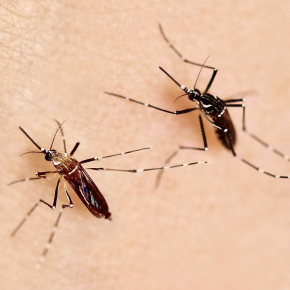The Role of Mitochondria in Zika Virus Propagation & Immune Evasion

The World Mitochondria Society is beginning to outline the agenda for their annual meeting, with a spotlight on groundbreaking research. One notable study to be discussed is the discovery of how the Zika Virus NS1 protein promotes the formation of tunneling nanotubes, which facilitate mitochondrial transfer. This insight not only enhances our understanding of viral behavior but also underscores the complex role of mitochondria in cellular communication and pathogenesis. Such findings could pave the way for innovative treatments and preventive strategies for viral infections, emphasizing the mitochondria's pivotal role in health and disease.
The Zika virus (ZIKV) remains a significant public health challenge, withits unique capability for vertical transmission and association withcongenital abnormalities. Despite various studies, the strategies employedby ZIKV to spread and evade the immune system have only been partiallyunderstood. Recent investigations have unveiled a novel role of ZIKVnon-structural protein 1 (NS1) in enhancing viral propagation and survival,specifically through the induction of tunneling nanotubes (TNTs) formitochondrial transfer among host cells, including placental trophoblasts.
This study identifies that ZIKV uniquely prompts the formation of TNTs inhost cells, a capability not shared with other flaviviruses. This process,driven by the viral NS1 protein and its N-terminal region, facilitates theintercellular transfer of not just viral components but also mitochondria.The transfer of mitochondria via TNTs plays a crucial role in not onlyproviding the energy needed for viral replication but also in evading thehost's immune response. Infected cells receiving mitochondria through TNTsshow a reduced interferon response, indicating a sophisticated mechanism ofimmune evasion by ZIKV.
The uncovering of this previously unrecognized mechanism underscores the sophisticated strategies employed by ZIKV to manipulate host cell structures and evade immune responses. The pivotal role of NS1 in ZIKV's lifecycle opens up new avenues for therapeutic interventions targeting the virus's reliance on host mitochondria for propagation and immune evasion. This study highlights the complexity of ZIKV-host interactions and the central role of mitochondria in viral pathogenesis.
To mitigate ZIKV infection, strategies could focus on inhibiting TNTformation or disrupting the interaction between NS1 and mitochondria.Further research is needed to develop inhibitors targeting these specificmechanisms without adversely affecting host cell functions. Enhancing themitochondrial antiviral signaling pathway represents another potentialstrategy against ZIKV infection. The ongoing development of vaccines andspecific antiviral treatments will be crucial in preventing the spread ofZIKV and its associated health impacts.
Article DOI: 10.21203/rs.3.rs-3674059/v1
Image copyrirght: © Felix Hol/Blaise Daures.


